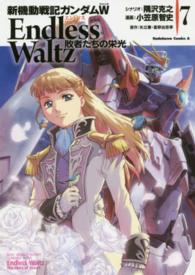- ホーム
- > 洋書
- > 英文書
- > Literary Criticism
Full Description
Situated at the crossroads of rhetoric and fiction, the genre of declamatio offers its practitioners the freedom to experiment with new forms of discourse. This volume places the literariness of Roman declamation into the spotlight by showcasing its theoretical influences, stylistic devices, and generic conventions as related by Seneca the Elder, the author of the Controversiae and Suasoriae, which jointly make up the largest surviving collection of declamatory speeches from antiquity.
Authored by an international group of leading scholars of Latin literature and rhetoric, the chapters explore not only the historical roles of individual declaimers, but also the physical and linguistic techniques upon which they collectively drew. In addition, the 'dark side of declamation' is illuminated by contributions on the competitiveness of the arena and the manipulative potential of declamatory skill and, in keeping with the overall treatment of declamation as a literary phenomenon, a section has also been dedicated to intertextuality. Drawing on thought-provoking analyses of Seneca the Elder's works, the volume highlights the complexity of these texts and maps out, for the first time, the socio-cultural context for their composition, delivery, and reception, as well as providing a comprehensive, innovative, and up-to-date treatment of Roman declamation that will be essential for both students and scholars in the fields of Latin literature, Republican Roman history, and rhetoric.
Contents
Martin T. Dinter and Charles Guérin: Introduction: What is Declamation?
I. Declaimers and Declamation
1: Yelena Baraz: The Bitter Medicine of History: Seneca the Elder on the Genre of Declamation
2: Martin T. Dinter: Seneca and the Past
3: Charles Guérin: Greek Declaimers, Roman Context: (De)constructing Cultural Identity in Seneca the Elder
4: Orazio Cappello: Nomination and Systematization in Seneca's Controversiae
II. Physical Technique: Actio
5: Anthony Corbeill: Physical Excess as a Marker of Genre in the Elder Seneca
6: Andrea Balbo: Between Real and Fictional Eloquence: Some Observations on actio in Porcius Latro and Albucius Silo
III. Linguistic Technique: Motifs and Devices
7: Bart Huelsenbeck: The Ocean (Seneca Suas. 1): Community Rules for a Common Literary Topic
8: Beatrice Larosa: The Mythical exempla of Faithful Heroines in Seneca the Elder's Work: Literary Occurrences of a Declamatory Device
9: Chris van den Berg: The Rhetoric of Decline and the Rhetoric for declamatio
IV. The Dark Side of Declamation
10: Jonathan Mannering: Objection! Contesting Taste and Space in Seneca's Declamatory Arena
11: Yazmín Victoria Huerta Cabrera: Color Medius or the Colour of Suspicion
12: Catherine Schneider: Laughing is no Laughing Matter: Laughs and Laughter in Seneca the Elder's Oeuvre
V. Intertextuality
13: Julien Pingoud and Alessandra Rolle: Intertextuality in Seneca the Elder
14: Stefan Feddern: The Use of the Apostrophe: A Sign of the Fictionality of Declamation?
15: Danielle van Mal-Maeder: Controversial Games: Didactical Voices and the Construction of Discourse in Seneca's Controversiae and Suasoriae








